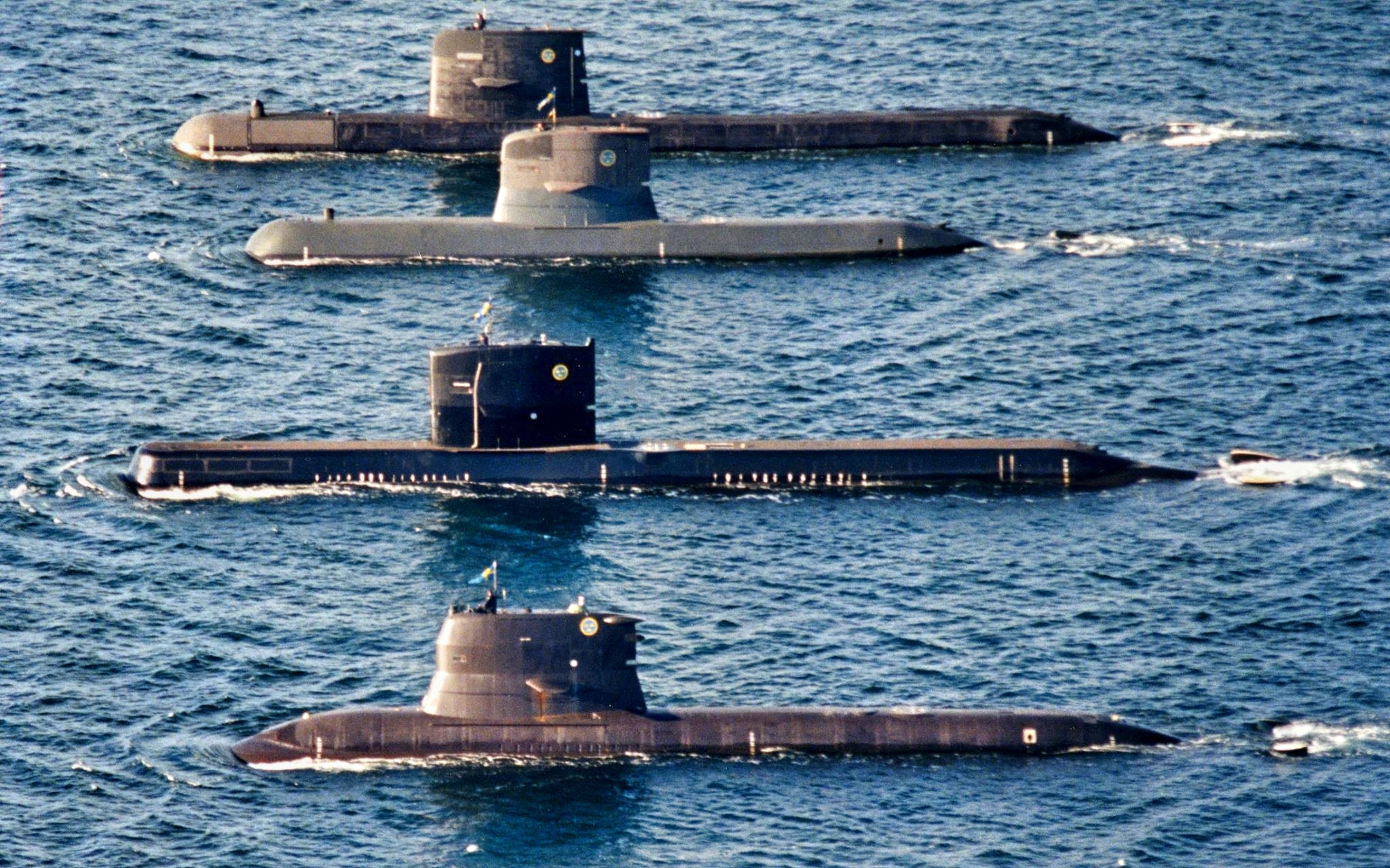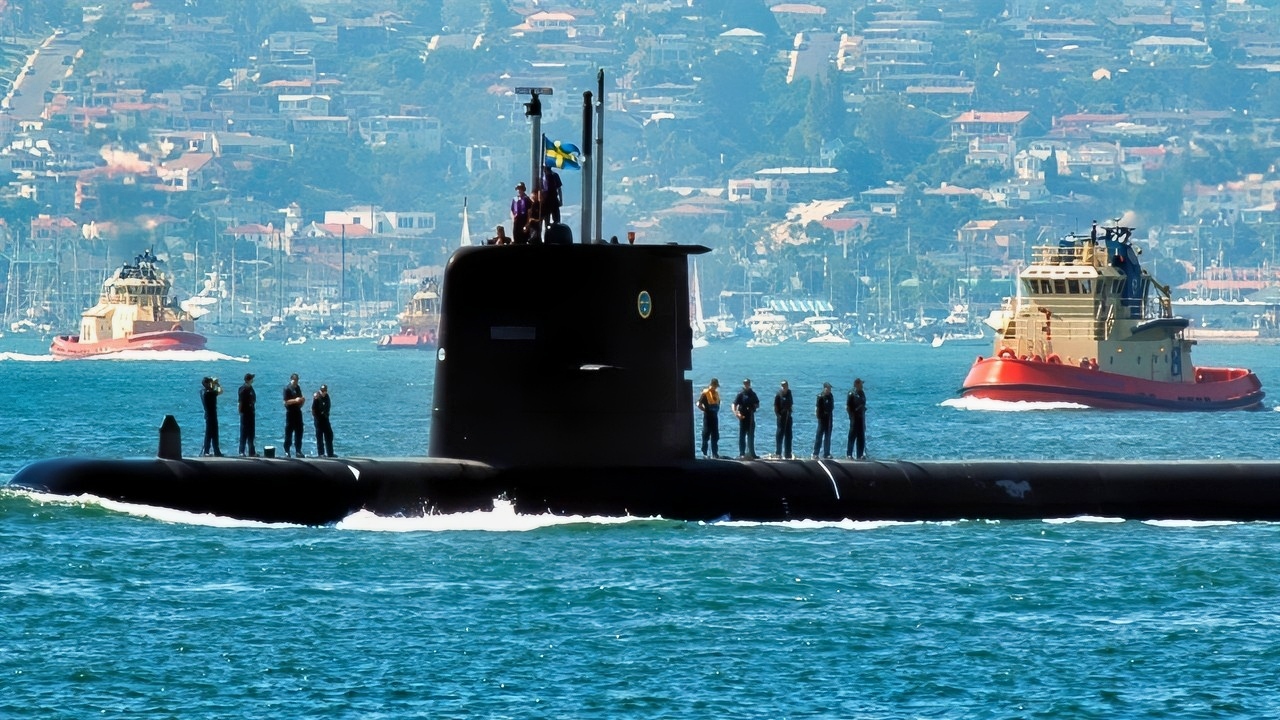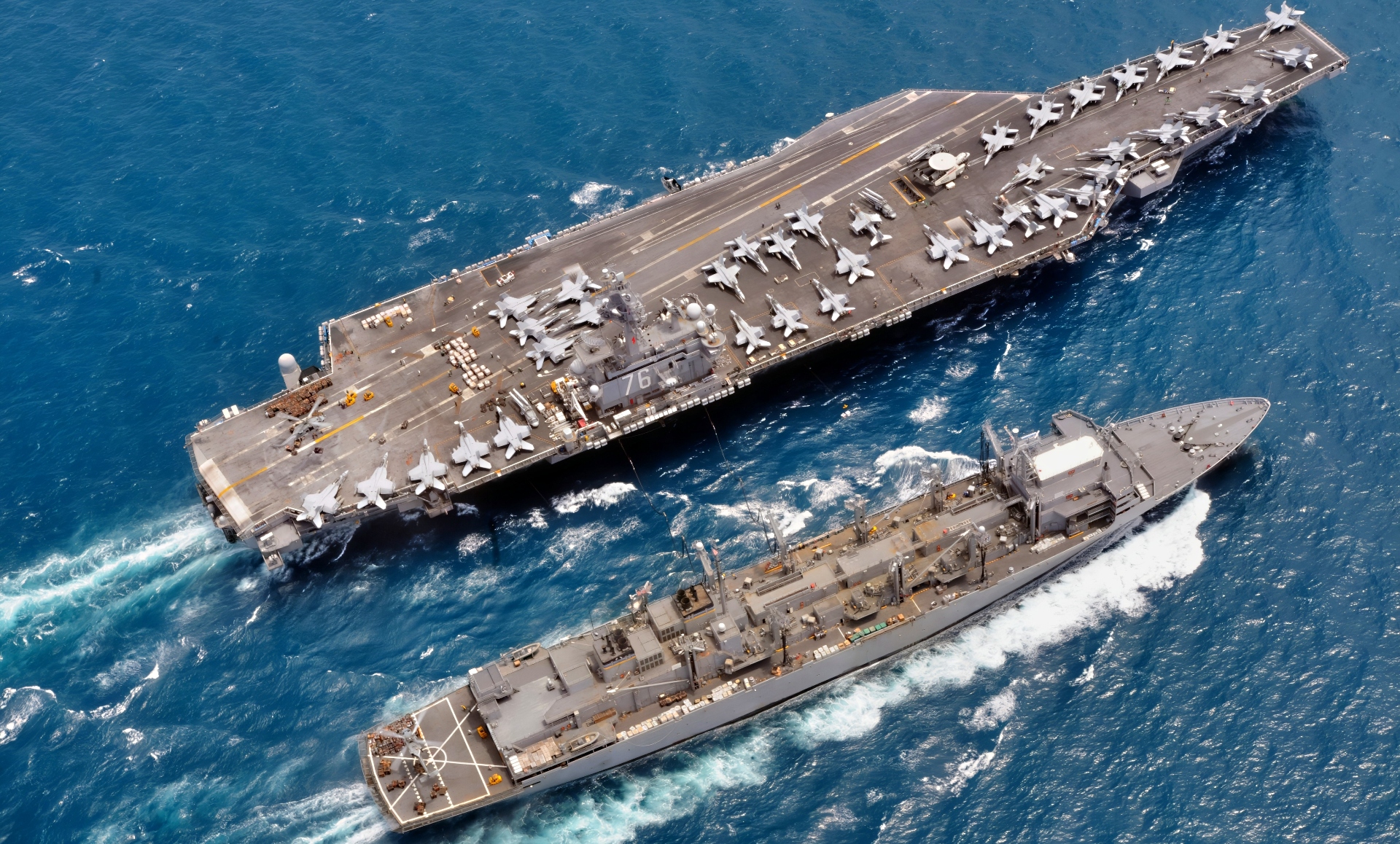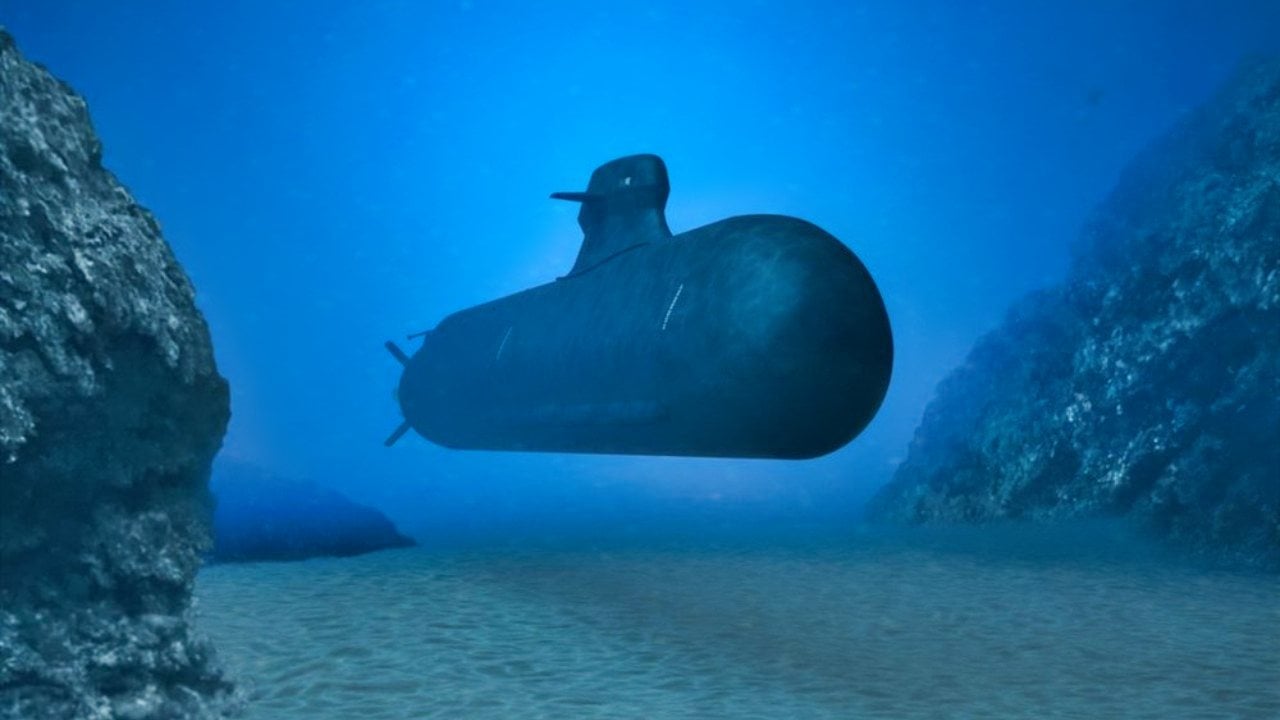Key Points and Summary – Sweden is building the new Blekinge-class (A26) submarine, an evolutionary successor to the legendary Gotland-class that famously “sank” the USS Ronald Reagan in a 2005 exercise.
-Optimized for littoral combat in the Baltic Sea, the A26 is one of the world’s most advanced non-nuclear designs.

Gotland-Class Submarines. Image Credit: Creative Commons.
-It features improved Air-Independent Propulsion (AIP) for longer submerged endurance, enhanced stealth through sound-damping measures, and a high degree of automation.
-Its strategic importance is heightened by the need to counter Russian gray-zone activities, such as the recent severing of undersea cables in the region.
Meet the Blekinge-Class: Sweden’s New ‘Carrier-Killer’ Submarine
The star of this 2005 story is the Gotland-class, a small but extremely capable class of submarines.
During the event, one of Sweden’s submarines managed to snap a few photographs of the USS Ronald Reagan (CVN-76) with its periscope. The photos provided proof that had the Swedish submarine been armed, and fired at the aircraft carrier, the great ship would likely have suffered several hits and potentially been sunk.
The key to the Gotland-class’ extremely silent operations is its air-independent propulsion, which allowed the submarine to penetrate even the thick CSG defenses—which include not only the carrier’s own organic defensive measures, but also anti-submarine air assets, other surface ships, and friendly submarines.
The simulated strikes were so impressive that the U.S. Navy took the extraordinary step of asking the Swedish government a favor: permission to lease the Gotland-class submarine that simulated the strikes on the USS Ronald Reagan.

(Oct. 1, 2005) – The Swedish diesel-powered attack submarine HMS Gotland transits through San Diego Harbor during the “Sea and Air Parade” held as part of Fleet Week San Diego 2005. Fleet Week San Diego is a three-week tribute to Southern California-area military members and their families. U.S. Navy photo by Photographer’s Mate 2nd Class Patricia R. Totemeier (RELEASED)
In addition to the submarine itself, the Navy asked the Swedes if they could borrow its crew. The goal? To hone the U.S. Navy’s own anti-submarine capabilities.
That incident, however, occurred two decades ago. And while the Gotland-class is indeed an impressive class of submarines, it is not static; it is improving.
“The Gotland-class submarines HMS Gotland and HMS Uppland have finished their mid-life upgrades (MLUs), making sure tomorrow’s challenges are met,” Saab shared in a statement. “The changes result in increased performance, improved stealth capabilities as well as increased navigation, combat, comms and ship control capabilities.”
Despite the impressive capabilities of the Gotland-class, it will eventually give way to another, more capable class of submarines: Saab’s Blekinge-class.
Saab explains that the new class is an iterative improvement, and that “many systems used in the vessels’ MLU are paving the way for the Blekinge-class (A26) submarine’s cutting-edge capabilities. This makes the Gotland-class a step in the evolutionary chain of submarines.”
First in, First out
The upcoming Blekinge-class will first serve alongside the Gotland-class in tandem. But the newer submarines are significantly more capable than their predecessors.
H I Sutton, a leading naval authority, explained what the A26 submarines are capable of.
“The A-26 is one of the most advanced and forward-looking non-nuclear submarine designs in the world,” Sutton writes. “The baseline version is optimized for littoral combat where larger nuclear-powered attack submarines are at their weakest, and larger derivatives are steadily enhancing its blue-water credentials also.”
Sutton elaborated, explaining that “Swedish submarines have a tradition of being relatively small to suit their Baltic primary operating environment, and feature very high levels of automation resulting in very small crews. They also pioneered the modern wave of Air Independent Power (AIP, also known as Air Independent Propulsion). More subtle design features include the carriage of 400mm lightweight torpedoes. Unlike other lightweight torpedoes these are wire guided and can be mass-fired.”

(August 15, 2008) With SH-60 helicopters moving pallets of supplies both USS Ronald Reagan (CVN 76) and USNS Bridge (T-AOE 10) work together during a replenishment at sea or RAS. With Reagan’s six galleys and approximately 4,100 Sailors it takes a lot of produce to feed that many folks and the Nimitz-class aircraft carrier got what it needed from USNS Bridge to do so.
The Ronald Reagan Carrier Strike Group is on a routine deployment in the 7th Fleet area of responsibility. Operating in the Western Pacific and Indian Ocean, the U.S. 7th Fleet is the largest of the forward-deployed U.S. fleets covering 52 million square miles, with approximately 50 ships, 120 aircraft and 20,000 Sailors and Marines assigned at any given time.
U.S. Navy photo by Senior Chief Mass Communication Specialist (SW/NAC) Spike Call
One of the improvements over the earlier Gotland-class is the Blekinge-class’ AIP, which, thanks to a series of refinements, will allow the newer submarines to remain underwater for longer periods and reduce the amount of time the subs must surface to recharge their batteries.
In addition to the submarine’s submerged endurance, the Blekinge-class also runs quieter through the water thanks to hull coatings made of rubber—which absorb sonar pings—as well as other sound and sonar-damping measures.
The Blekinge-class will also be slightly longer than the Gotland-class, displacing about 2,000 tons and measuring 66 meters. Still, compared to the nuclear-powered behemoths in the U.S. or Russian navies, the Blekinge-class is rather small. But that size plays to the submarine’s strengths.
Of primary concern to the Blekinge-class will be intelligence gathering, surveillance, and coordination with special operations forces—in addition to the submarine’s usual anti-submarine and anti-surface warfare capabilities. To that end, the Blekinge-class will integrate updated electronic warfare and sonar suites.
Blekinge-Class Submarines Make Sense
The strategic impetus for the new Blekinge-class submarines has arguably never been higher.
Starting in late 2023, a series of incidents in the Baltic Sea resulted in the severing of underwater power and communications cables connecting Nordic and Baltic countries.
Careless oil tankers and shipping captains dragging their anchors are nominally at fault.
However, Russia’s shadow fleet of ships with uncertain ownership and registration is suspected to be behind the acts.
Several investigations are ongoing, with prosecutors in Finland and Sweden leveling charges against the ships, and NATO has been forced to increase its maritime patrols in the Baltic Sea to counter nefarious acts by Russia that don’t rise to the level of acts of war. Saab’s Blekinge-class submarines will be an important node in NATO’s greater surveillance network.
About the Author: Caleb Larson
Caleb Larson is an American multiformat journalist based in Berlin, Germany. His work covers the intersection of conflict and society, focusing on American foreign policy and European security. He has reported from Germany, Russia, and the United States. Most recently, he covered the war in Ukraine, reporting extensively on the war’s shifting battle lines from Donbas and writing on the war’s civilian and humanitarian toll. Previously, he worked as a Defense Reporter for POLITICO Europe. You can follow his latest work on X.
More Military
The U.S. Army’s Big M10 Booker ‘Light Tank’ Mistake Still Stings
The U.S. Navy Built Two Versions of the Littoral Combat Ship. Both Were a Mess.
The EA-18G Growler Has A Message for the U.S. Navy
Warship Goes Down Below the Waves: Navy F/A-18F Fighter Fires A Stealth Munition










